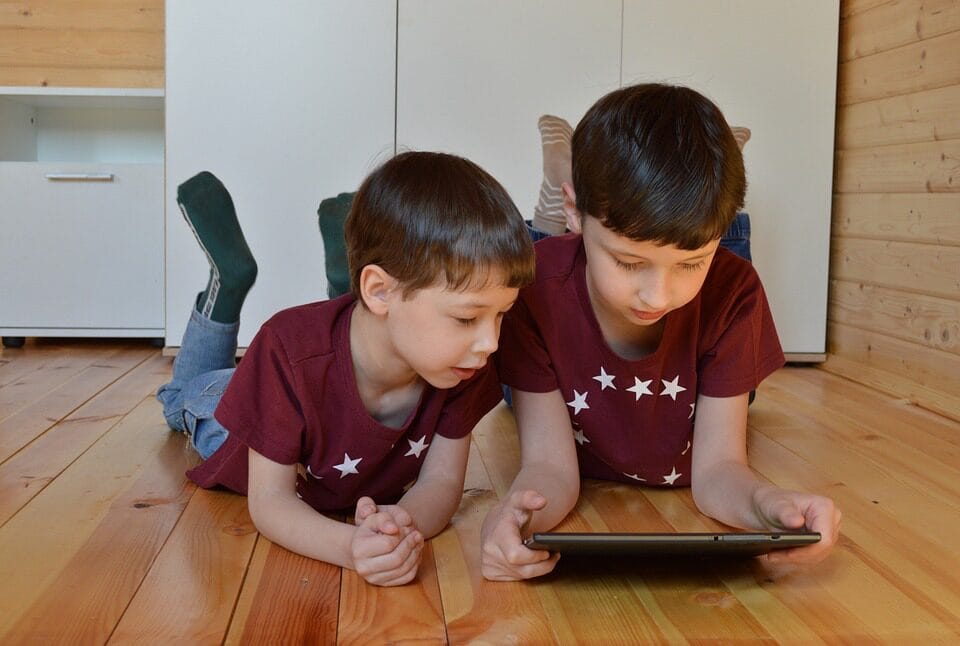Some parents do not allow preschool children to watch TV or play video games, fearing that such pastime will negatively affect their fragile psyche. We found out whether scientific evidence backs up this concern.
About the fact that young children should be protected from watching cartoons, write on specialized portals and blogs. In articles on websites children's hospitals and Media it is argued that cartoons should be prohibited for children under three years of age, and for children under two years of age - full a ban on watching any videos, as this “impairs memory, attention and provokes the development of depression.” Other dangerous consequences include: deterioration vision, underdevelopment cerebral hemispheres and even epilepsy. In some publications it is noted that watching some animated works can “not just slow down or disrupt, but stop” the development of a child. Other experts emphasize that although spending many hours on cartoons is not beneficial, having a TV running in the background will not harm children in any way. This point of view adheres to, for example, pediatrician Evgeny Komarovsky.
WHO recommends Children under one year old should avoid any interaction with screens: watching videos, playing games, etc. Those aged between one and four years old can spend up to an hour doing these activities daily, but parents are advised to follow the principle of “less is more.” American Academy of Pediatrics Guidelines a little stricter - no cartoons, games and other video content (except for video chats with relatives) up to two years, from two to five years - no more than 60 minutes. per day. Experts emphasize that at this time it is better to have an adult nearby who will comment on what is happening on the screen. American Academy of Child and Adolescent Psychiatry divides screen time for educational and leisure purposes. In the first case, watching videos and playing games is permissible from 18 months, in the second - from two years. Experts recommend that children under five years old spend no more than an hour on leisure content on weekdays and no more than three hours on weekends, and the organization does not give advice on educational content. At the same time, scientists strongly recommend not using cartoons as a means of calming a child or as a “digital nanny” that will occupy the attention of the offspring and give the father or mother the opportunity to go about their business.
In the first months of life vision the child’s vision is blurry, and the distance at which he sees well is small. At least until one and a half years old, children look fascinated at the change of colors and shapes, but cannot correlate the image on the screen with similar objects in the real world. explains pediatrician David Hill of the American Academy of Pediatrics. This is confirmed by experiments. In 2013, a group of scientists from the USA showed for children aged 15–16 months, images of animals on the touch screen, and then their three-dimensional figures. When you click on a certain place on the screen, the sound of the corresponding animal is heard, while on the figure this effect is achieved by pressing a button located in the same place. It turned out that after interacting with the screen, children did not transfer the experience they received to the physical object - and vice versa. Scientists have concluded that it is impossible for a child at this age to master a new skill in a three-dimensional world by practicing on a two-dimensional image.
Pediatrician Jennifer Cross explains: “A child will not learn to add blocks by watching them on a screen. He will learn by touching the blocks, feeling their texture and weight, and using trial and error to learn how to place one block on top of another.” She adds that children develop the ability to relate what is happening on screen to what is happening in the real world by about two years of age.
Thus, until the age of two years, there is no benefit from watching even educational content. But cartoons and games are quite capable of harming children. A group of Singaporean scientists provedthat watching videos for a long time can change the structure of a child's brain waves. The researchers included in the sample 437 pregnant women, and then their born children. When these children were one year old, the authors of the experiment asked the women to fill out a questionnaire about the television viewing habits of themselves and their babies. Six months later, mothers and children were invited to take an electroencephalogram. They found that the more screen time children spent at 12 months, the more active their low-frequency theta waves were, compared to their high-frequency beta waves. This meant that the brains of the babies studied were in a state of unfocused and unprepared for cognitive activity.

The researchers invited these same children for extensive neuropsychological testing at age nine, and the researchers also collected feedback from their parents and teachers about their behavior and academic performance. Comparing all the data, they came to the conclusion that with each additional hour that the child spent watching the video at the age of 12 months, he had more and more difficulties with concentration and executive functioning at school age. However, the authors of the article draw attention to the limitations of their findings - the study began in 2010, when tablets and smartphones were not yet so widespread, and focused almost entirely on watching TV.
American scientists in 2019 held magnetic resonance imaging of 47 children aged three to five years old and asked their parents about how much time their sons and daughters spend watching screens, what content they watch, whether they prefer games or videos, whether there is a TV in their room, and whether they have a tablet at their immediate disposal. Comparing the results of MRI and questionnaires, the researchers found that the easier it was for a child to access a screen, the more impaired the microstructural integrity of white matter areas of the brain in areas that are responsible for language development, literacy skills, and executive functions (that is, the ability to follow instructions, plan actions according to a goal, change responses depending on the context, and selectively attend to desired stimuli). The same findings were true for children who preferred passive viewing of videos to interactive interaction and spent many hours with a tablet or other device. Such results could be attributed to the fact that the parents did not have the opportunity to occupy the child in any other way. However, all families from the sample had a high socio-economic status - therefore, the scientists say, they most likely understood the need for the comprehensive development of the child and could provide him with a variety of forms of pastime.
Link between video viewing and language development problems identified and researchers from Canada. After surveying the parents of 894 children aged six to 24 months and testing their children's speech abilities, they concluded that every half hour of screen time during the day increased the risk of speech delay in children by 49%. Even having a TV on in the background during family dinners had a negative impact on the language development of children from two to six years old. found out French scientists. Experts explain this by the fact that, hearing both sounds from the screen and the conversation of parents, the child experiences difficulty concentrating on one sound source and, accordingly, perceives speech worse.
Scientists from Ohio State University notethat frequent television viewing usually negatively affects executive function in preschoolers. The study authors created a multivariate model that takes into account the age at which regular video viewing began, the amount of time spent watching videos daily, the type of content consumed, the television channels the child watches, and the device the child uses. It turned out that those who started watching videos at an earlier age and who watch cartoons more often, especially on channels where the narration is interrupted by commercial breaks, perform worse on tasks of executive function. Scientists explained the negative impact of advertising by the fact that because of it, the child is regularly distracted and loses the ability to maintain his attention on one story for a long time. The only children's channel analyzed in the study that moderate viewing stimulated executive function was PBS Kids, which featured Sesame Street, Dinosaur Train, Wildcat, and What Does Martha Say, among others.

British scientists discoveredthat the more screen time a child spends between the ages of six months and three years, the worse their sleep—they sleep less at night and a little more during the day, and they also take longer to fall asleep. It turns out that even at three years old, that is, at an age when most authoritative medical organizations already allow a child to turn on cartoons or other videos for an hour, those children who are deprived of this entertainment sleep best.
Australian scientists identified Another negative effect: it turned out that every additional hour spent watching videos during the week before the age of two subsequently increased the risk of increasing body mass index relative to the population average. A similar connection is already observed in children 4–13 years old demonstrated researchers from the Netherlands, and for children aged five years - their American Colleagues.
A group of scientists from New York University tried find out, how different types of media content influence a child: educational for children from two to six years old, entertainment for the same age group, any content for schoolchildren and teenagers, and videos aimed at an adult audience. The study involved 99 pairs of Hispanic mothers and children with low levels of parental education. The main predictor of children's aggressive behavior turned out to be, oddly enough, not Hollywood action films or news, but cartoons intended for young children. Scientists found it difficult to explain this phenomenon, but suggested that viewing teenage and adult content in preschool may make the child’s behavior more aggressive in the future.
Thus, children under the age of two or three years should be completely protected from interacting with any screens, and subsequently, when turning on cartoons and other video content, be guided by the rule “the older the child and the less time spent watching, the better.” According to scientists, even having a TV on in the background negatively affects the development of preschool children.
Cover image: Image by Andrii Sinenkyi from Pixabay
If you find a spelling or grammatical error, please let us know by highlighting the error text and clicking Ctrl+Enter.






